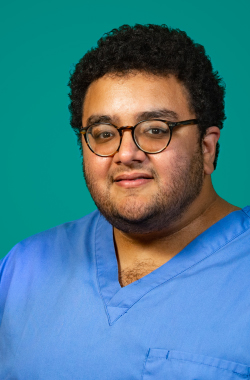Movement Disorders
Movement disorders describe abnormal movements you cannot control. Sometimes these conditions can result in too little movement, while other conditions can cause uncontrolled, or too much movement.

Some examples of movement disorders include:
- Tremors
- Tics
- Myoclonus
- Chorea/Athetosis
- Ballismus
- Dystonia
- Akathisia
There are many causes of movement disorders, but most involve an imbalance in the deeper structures in the brain, such as the basal ganglia. This area makes movements easier to perform, and more coordinated, smooth, and balanced. A few of the most common movement disorders are listed below.
Parkinson’s disease
“My husband takes tiny steps and sometimes he can’t stop walking. He keeps falling and just broke his hip. Is there any way to help him?”
Parkinson’s disease (PD) affects 1 million Americans. It is caused by a reduction in a specific chemical (dopamine) in certain parts of the brain. It can cause a resting tremor, slow movement, rigidity, and postural instability (poor balance and frequent falls). It can also affect memory, mood, and sleep. It typically affects older patients and slowly worsens.
Many medications treat the symptoms of PD, however, the right balance of medications for your condition can be hard to find and can change with time. However effective treatment for PD can improve your symptoms, independence, and quality of life for years to come.
There also are non-pharmacologic treatments for movement disorders. Physical and occupational therapy programs, including LSVT for PD, can benefit many patients. Deep brain stimulation (DBS) is also commonly used to treat Parkinson’s disease and essential tremor.

Essential tremor
“My mother had a tremor all her life. It kept getting worse until she couldn’t eat or drink for herself. I have the same tremor. Will the same thing happen to me?”
Essential tremor is shaking that gets worse with movement. It runs in families, can affect young adults, and can get worse with age. It affects your hands and your voice. It gets worse with activity and can make eating and drinking difficult. However, there are medication and procedures which can help improve these symptoms.
Restless legs syndrome
Restless legs syndrome describes the irresistible urge to move your legs. It often happens at night when you are trying to fall asleep. It is sometimes a sign of iron deficiency. In other cases, it can be treated with.





